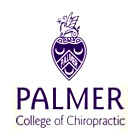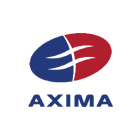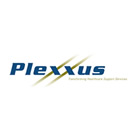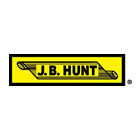
S.M.A.R.T. Drive Failure Detection
Author: Swapna Naraharisetty, 2BrightSparks Pte. Ltd.
Storage drives are prone to corruption or failure at any moment. If your hard disk drive (HDD) or solid-state drive (SSD) stops working suddenly and you do not have a backup of it, then you may lose valuable data stored on the drive. Therefore, you need to check your drive’s health regularly, so that you can take preventive measures before data loss occurs.
In this article, we will explain about S.M.A.R.T. drive failure detection and how you can use it detect impending drive failures.
S.M.A.R.T.
S.M.A.R.T. is an acronym for Self-Monitoring, Analysis and Reporting Technology. S.M.A.R.T. acts as an interface between the computer's BIOS (Basic Input/Output System) and the storage drive (hard disk drive or solid-state drive), which monitors different drive attributes to detect a failing drive.
How does S.M.A.R.T. Detection work?
Each drive manufacturer (implementing the SMART feature) defines a set of attributes (such as read error rate, end-to-end error, spin retry count, command timeout) and sets threshold values beyond which an attribute should not exceed under normal drive operation. The attributes are used to evaluate the performance of a drive.
When assessing a drive’s health, the SMART system checks the attribute values against their threshold values and reports status information to the user. The status contains two values: "threshold not exceeded" and "threshold exceeded". “Threshold not exceeded” status indicate that the drive is working according to its specification. “Threshold exceeded” condition means the drive is about to fail.
If an attribute value predicts a drive failure, the BIOS (if it supports SMART), Windows (Windows Vista and later) or a SMART utility (provided by the drive manufacturer) running on the host system may automatically send a warning to notify the user about the failure. Then the user should backup their files immediately and replace the failing drive.
SMART Self-Tests
SMART drives may offer several self-tests to measure the reliability of the drive:
Short: The short test is automatically performed at the system start-up by a utility installed on the drive by its manufacturer. The short test checks the electrical, mechanical, and read performance of the drive and returns a warning if any of them are not functioning properly.
Long/Extended: For a Long/Extended test, the entire disk surface is tested to detect damaged or corrupt areas of the disk. This test usually takes several hours depending on the speed and its size.
Conveyance: This test is to check for damages occurred during transportation of the drive from the drive manufacturer to the computer manufacturer. Such a test is only available on ATA drives, and it usually takes several minutes.
Selective: Some drives allow selective self-tests of just a part of the surface.
SMART Drive Failure Detection with SyncBackPro
SyncBackPro’s SMART drive failure detection feature performs certain health checks at the start of the profile run to detect any potential failures (or if it has already failed).
If a problem is detected, the drive name, drive type and reason for the failure is recorded in the log file. If no failures are detected, then SyncBack records "Drive is not predicted to fail" message in the log file. If you want more detailed information about your drive's health, check its manufacturer's website for a dedicated tool.
To enable SMART failure detection in SyncBackPro: Modify your profile, go to Expert > Log > and tick the option “Log the S.M.A.R.T. information to check for possible drive failure”. Alternatively, you can click on the “S.M.A.R.T. Test” button on the Log settings page to detect imminent drive failures of all the drives that SyncBackPro has access to.
SyncBack V10 introduced a Drives page to the Global Settings. In that you can quickly see the SMART status of all your local drives.
Drive failure detection is only supported if your computers BIOS and drive supports the S.M.A.R.T. standard. Even if your BIOS supports it, you may need to manually enable it in your BIOS.
Conclusion
SyncBackPro’s SMART failure detection capability checks the drive’s health and predicts impending failures. Although the SMART standard is used for failure detection, it should not be relied upon to predict failures. Unpredictable failures are also possible, e.g. sudden mechanical failure.
To avoid data loss, you should back up your important files regularly. Even if your drive fails without warning, you can still recover your files from the backup drive and keep your business running smoothly.
Noted Customers
© 2003-2025 2BrightSparks Pte. Ltd. | Home | Support | Privacy | Terms | Affiliate Program















